Sapphire Pulse AMD Radeon RX 7700 XT GPU Review: 1440P gaming done right
Sapphire Pulse AMD Radeon RX 7700 XT GPU Review: 1440P gaming done right
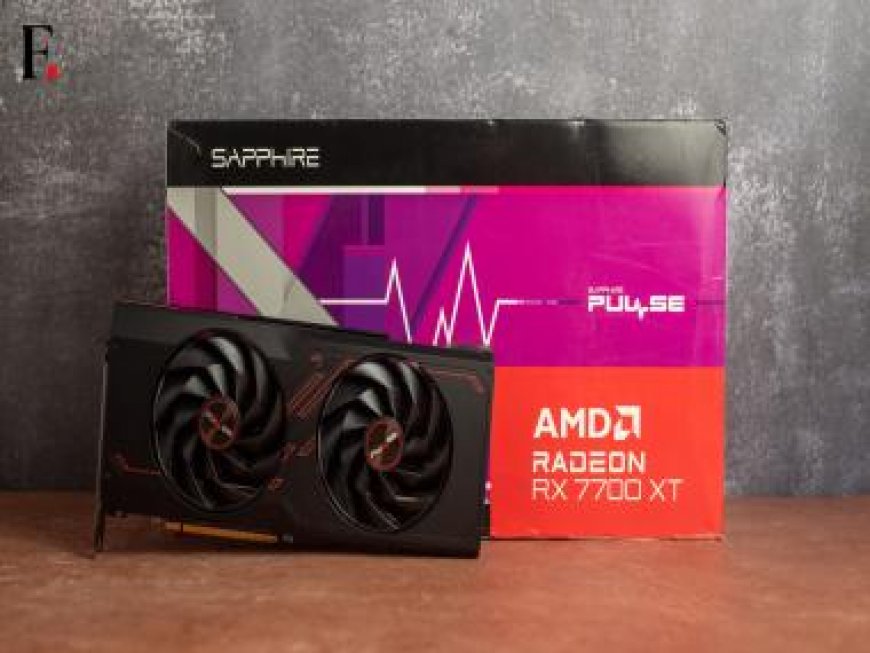
Pros:
– Solid performance at 1440P considering the price
– 12GB of superfast VRAM
– Quiet reference cooler
– AV1 support
– FSR 3.0 and Frame Generation take things to a whole new level
Cons:
– Pricing is a bit odd when you consider the reference RX 7800 XT
– Ray tracing performance needs focussed efforts
– Limited titles for some of AMD’s best software and AI features
Rating: 4.5/5
Pricing: Rs 44,900
A couple of weeks back, AMD introduced the final two GPUs in its 7000-series, the RX 7800 XT and the RX 7700 XT. In our review of the 7800 XT, we found that for the price that you pay for the reference design from AMD, there is hardly any other GPU worth recommending if you’re into 1440P gaming. The 7800 XT is a beast of a card, albeit with a few drawbacks. However, the reference card was priced so well at Rs 44,900 that other GPUs, especially from NVIDIA, are finding it difficult to make any sense.

With the RX 7700 XT though, things are a little different, mainly because there is no reference design from AMD — which means that you will have to go for cards from other manufacturers. We tested out the RX 7700 XT from Sapphire, specifically, the Sapphire Pulse AMD Radeon RX 7700 XT
If you’re looking to the latest AAA title at 1440P and are planning to do a little streaming as well, but don’t like reference design cards for some reason or are not able to get your hands on one, then the RX 7700 XT is definitely the card to get. Like the 7800 XT, it uses AMD’s latest RDNA3 architecture, possibly, their best graphics architecture for years and one that goes toe-to-toe with anything that NVIDIA has to offer.
AMD Radeon RX 7700 XT GPU Review: Specifications and Features
AMD is positioning this product as a direct competitor to the RTX 4060 Ti, which, costs about Rs 40,000 for the 8GB unit, while the 16GB unit costs north of Rs 45,000 if you can manage to get your hands on one. The 7700 XT sits smack dab in the middle of the two but performs better than both variants.
The RX 7700 XT shares the Navi 32 chiplet GPU with the RX 7800 XT but has certain features disabled. Each of these GPUs features a single 5nm Graphics Compute Die (GCD) surrounded by four 6nm Memory Cache Dies (MCDs). In the case of the RX 7700 XT, one of the MCDs is disabled.

The RX 7700 XT features 54 Compute Units, 54 Ray Accelerators, and 96 ROPs, in contrast to the RX 7800 XT’s 60 Compute Units, 60 Ray Accelerators, and 120 ROPs. It’s worth noting that the RX 7700 XT boasts a slightly higher-rated boost clock, surpassing the RX 7800 XT by just 114 MHz.
However, it falls short in the memory department. The RX 7700 XT comes equipped with 12GB of 18Gbps GDDR6 memory on a 192-bit bus, while the fully enabled RX 7800 XT sports 16GB of 19.5 Gbps memory on a 256-bit bus, along with a larger Infinity Cache. This combination gives the RX 7800 XT a significant advantage in terms of memory bandwidth over the RX 7700 XT.
The base RX 7700 XT is rated with a total board power of 245W, while the Sapphire Pulse variant is a bit more power-efficient at 230W. It represents a notable increase in power consumption compared to the RTX 4060 Ti 8GB, which is quite conservative at 160W.

AMD also has a couple of software features that help the new 7000 series, including the 7700XT stand out. AMD’s HYPR-RX feature is an intriguing addition that the company intends to integrate into the AMD Software control centre application. This technology offers a convenient one-click performance boost and is compatible with any DirectX 11 or DirectX 12 game. Essentially, the software combines the capabilities of Radeon Boost, Radeon AntiLag+, and Radeon Super Resolution and automatically applies these three features as required to enhance the gaming experience during gameplay.
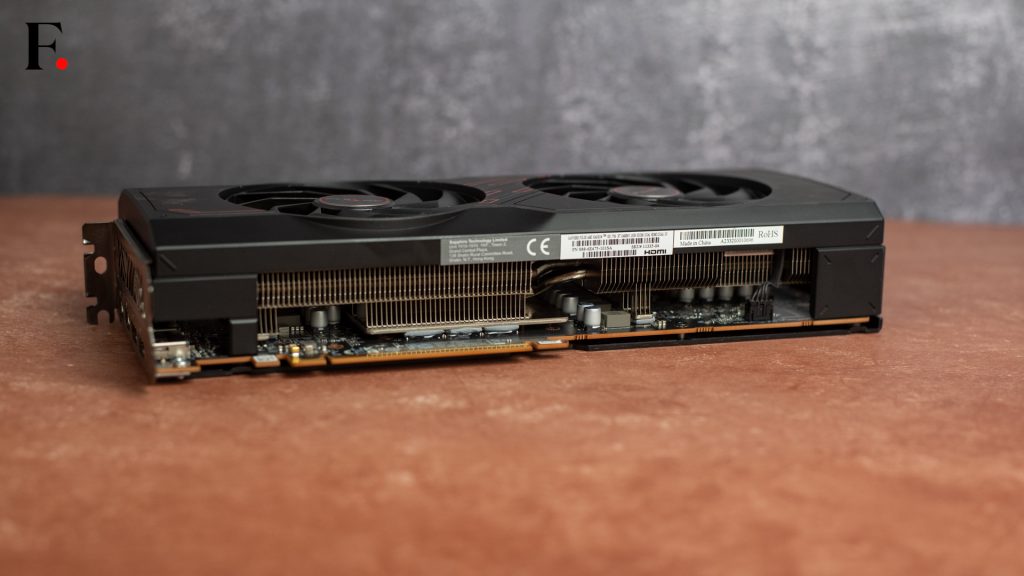
We also get FidelityFX Super Resolution 3 or FSR 3 and Fluid Motion Frames FMF. FSR 3 is being positioned as a technological rival to NVIDIA’s DLSS 3 Frame Generation. Both technologies share a common goal — to effectively double frame rates by generating alternate frames without having to pass them through the entire graphics rendering pipeline. However, the two technologies differ in their approaches to achieving this.
FSR 3 builds upon FSR 2 with its updated super-resolution upscaling, promising quality improvements across different rendering resolutions. Fluid Motion Frames (FMF) is a key addition to the FSR 3 feature set. FMF is a frame interpolation technology similar to what consumer televisions offer.
One significant advantage that FSR 3 FMF holds over DLSS 3 FG is its compatibility with any modern DirectX 12 GPU that supports async compute. This is because it doesn’t require a specific hardware component, unlike DLSS 3 FG, which relies on the Optical Flow Accelerator found in NVIDIA’s “Ada” GPUs.
Another notable advantage of the RX 7700 XT is its support for SAM, or Smart Access Memory. SAM functions as a direct channel of communication between the GPU and CPU. It enables the GPU to transfer surplus frames from its VRAM to the system RAM when VRAM capacity is nearing its limit. In simple terms, SAM is a clever optimization feature that simplifies the process of the processor accessing a graphics card’s VRAM, improving overall performance.
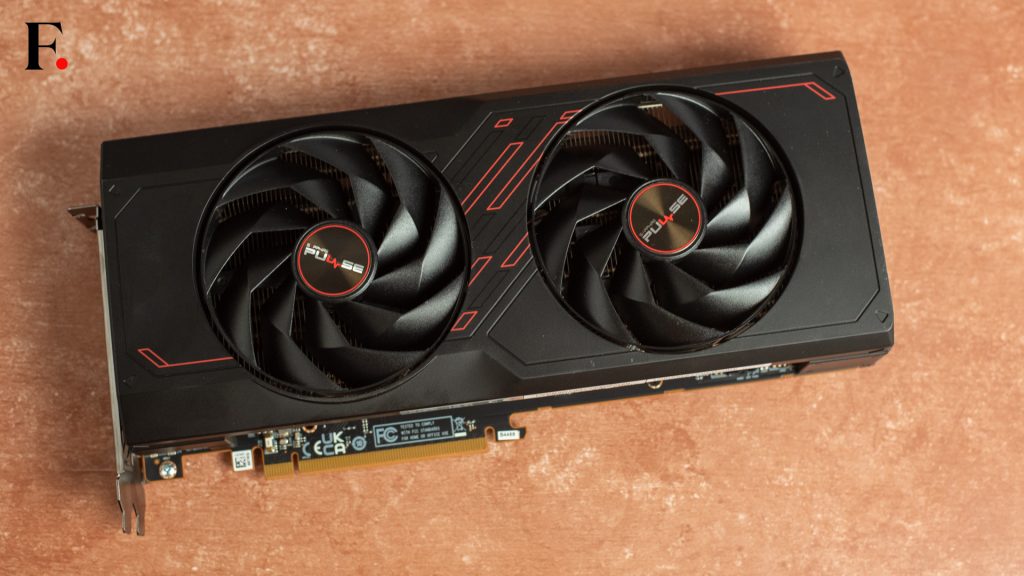
The 7700XT is also equipped with native support for AV1 encoding and decoding at the hardware level, and this is excellent news for streamers.
AMD Radeon RX 7700 XT GPU Review: Our test rig
In our testing, we paired the Radeon RX 7700 XT with an AMD 7800X3D processor, along with 32GB of Kingston Fury DDR5 RAM, running at a brisk 6000 MT/s. All of this hardware was connected to a Gigabyte Aorus X670E Master motherboard. We went with the Cooler Master Master Liquid PL360 Flux cooling system, and the entire setup was powered by a CoolerMaster MWE 1250W V2 80 plus gold PSU.
Throughout our testing, we adhered to stock settings, refraining from any overclocking or adjustments. The only modification we made was enabling XMP (or EXPO as AMD calls it) to ensure our RAM operated at its specified speed. Additionally, we kept ReBAR, or Smart Access Memory (SAM) as referred to by AMD, active. Usually, AMD automatically activates this feature if both your motherboard and GPU support it.
While it’s true that not all games exhibit significant improvements with ReBAR or SAM, the ones that do experience a noteworthy 18-20 per cent increase in frame rates compared to systems lacking the option to enable SAM or ReBAR.
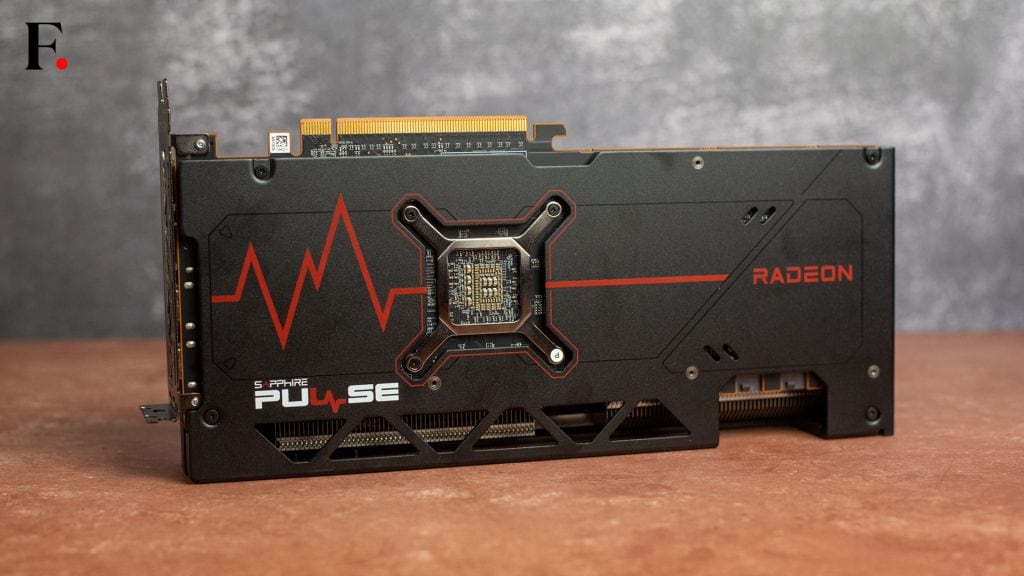
During our testing, we cranked up the games to their highest possible settings whenever feasible. Additionally, we had FSR 2.0 (FidelityFX Super Resolution) enabled in all games that supported it. We also ran one game on FSR 3.0
AMD Radeon RX 7700 XT GPU Review: Performance
The RX 7700 XT does pretty well in 1080p gaming. It handles most games with ease, delivering smooth performance, barring some seriously crushing games like Cyberpunk 2077, which, is anyway pretty taxing even on other, similar-class GPUs.
During our benchmark, the RX 7700 XT held its ground admirably across various games and scenarios.
AMD has positioned the RX 7700 XT as a 1440p gaming card, and it does pretty well in that department. It delivers fantastic performance at this resolution, making it an excellent choice for gamers looking to step up their visual experience without sacrificing frame rates.

These performance numbers reflect the RX 7700 XT’s native capabilities, so they showcase what the raw silicon can achieve without resorting to any magic tricks like AI upscaling for extra performance.
However, it’s worth noting that you do have the option to use upscaling techniques with the RX 7700 XT and they truly are something to behold. In Forspoken, for example, where we got to sample AMD’s latest upscaling magic, FSR 3, we literally tripled our frame rate in 1440P gaming when we switched FSR 3 on, along with Frame Generation. AMD finally has a solid answer to NVIDIA’s DLSS, and one that literally knocks the socks off of any challenges to performance in supported games.
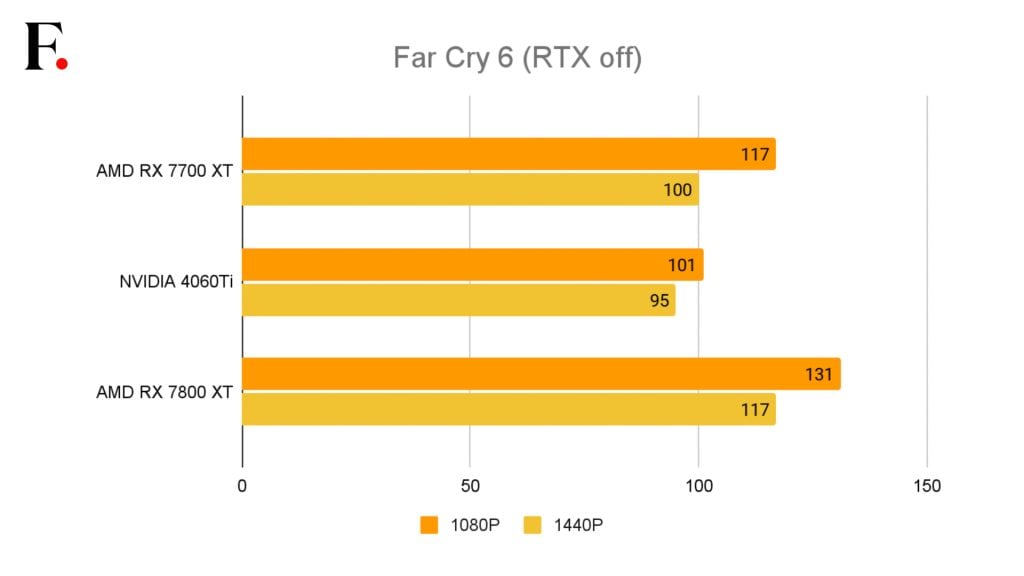
This is particularly true given that some FSR-supporting games haven’t received updates to improve the initial, somewhat shaky, implementation of AMD’s technology. Here’s to hoping this changes in the years to come, because AMD’s current generation of CPUs, certainly have the chops to smash its competition from team green to the ground, barring Ray-tracing performance.
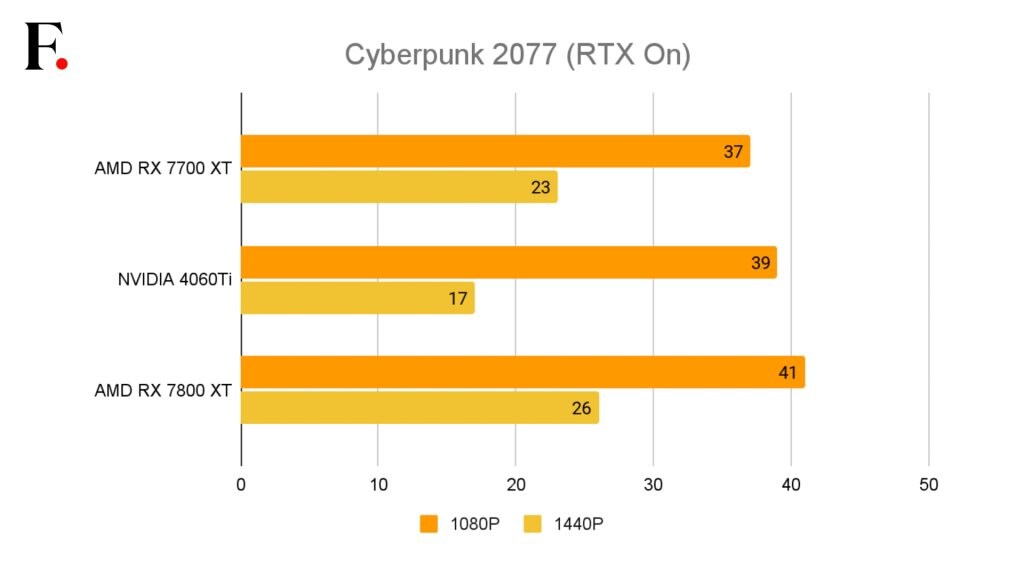
Much like Nvidia’s DLSS 3, FSR 3 has evolved from AMD’s upscaling solution and now incorporates the ability to insert new frames generated through AI. While DLSS upscaling is exclusive to Nvidia’s RTX graphics cards, with DLSS 3 Frame Generation limited to the RTX 4000 series, FSR 3 offers support for recent GPUs from all manufacturers.
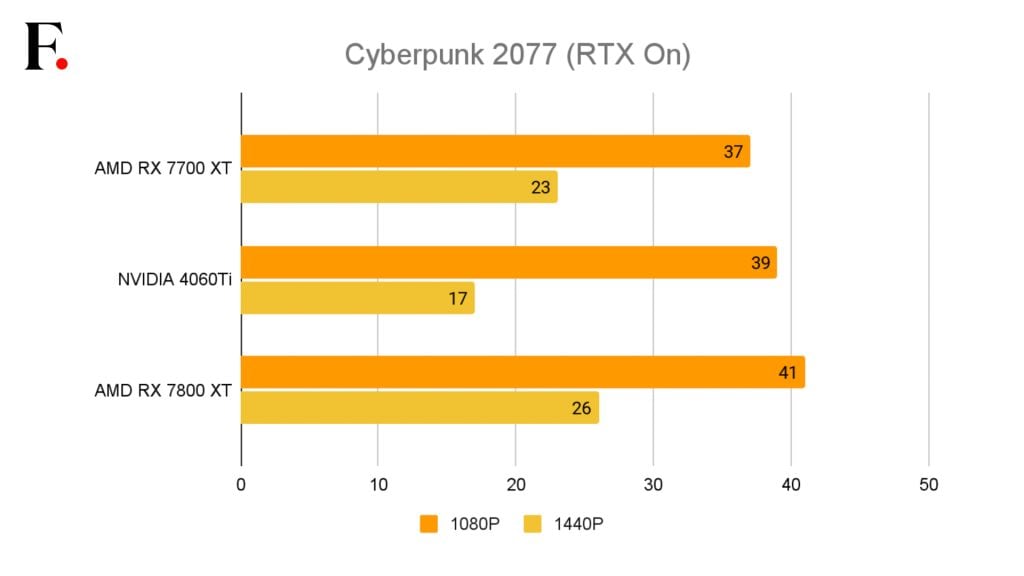
However, it’s important to note that not all graphics cards are on the same footing. AMD recommends enabling its new technology on Radeon RX 5000 series or Nvidia RTX 2000 series GPUs and later. Although FSR 3 may activate on older GPUs, it isn’t officially endorsed.
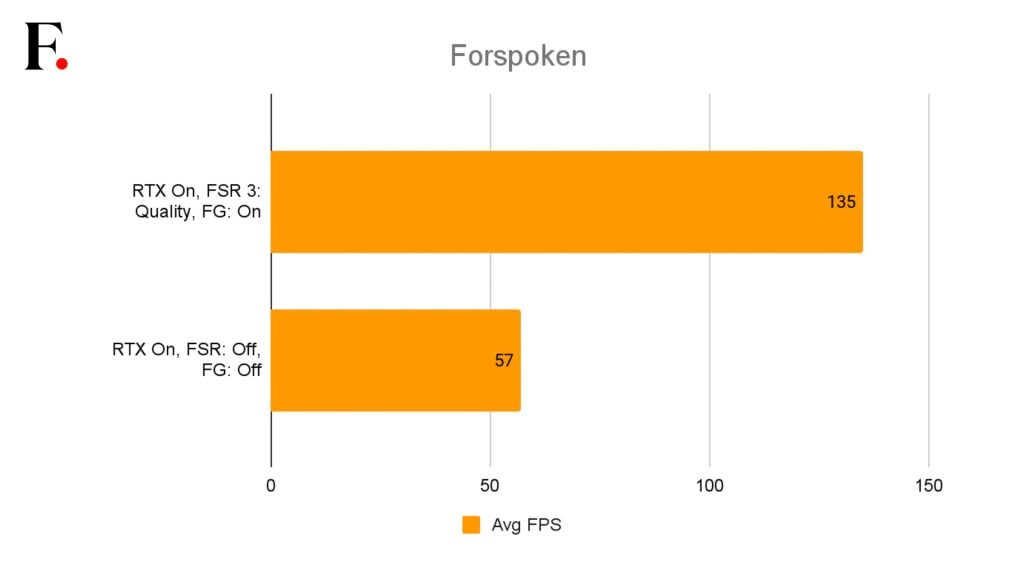
According to AMD’s metrics, combining AI-generated frames and upscaling can sometimes lead to a fourfold increase in frame rates compared to playing games at their native resolution.
AMD Radeon RX 7700 XT GPU Review: Verdict
The RX 7700 XT is a pretty solid option for 1440P gaming and an even better option for 1080P gaming, especially when you consider the slew of AMD’s AI enhancements and features that you get.
It really does take to the fight to the RTX 4060Ti, considering that the 16GB GPU is limited by its memory bus, just like the 8GB variant, neither of these NVIDIA GPUs will be able to deliver the best possible performance on the most demanding titles a few years down the line.
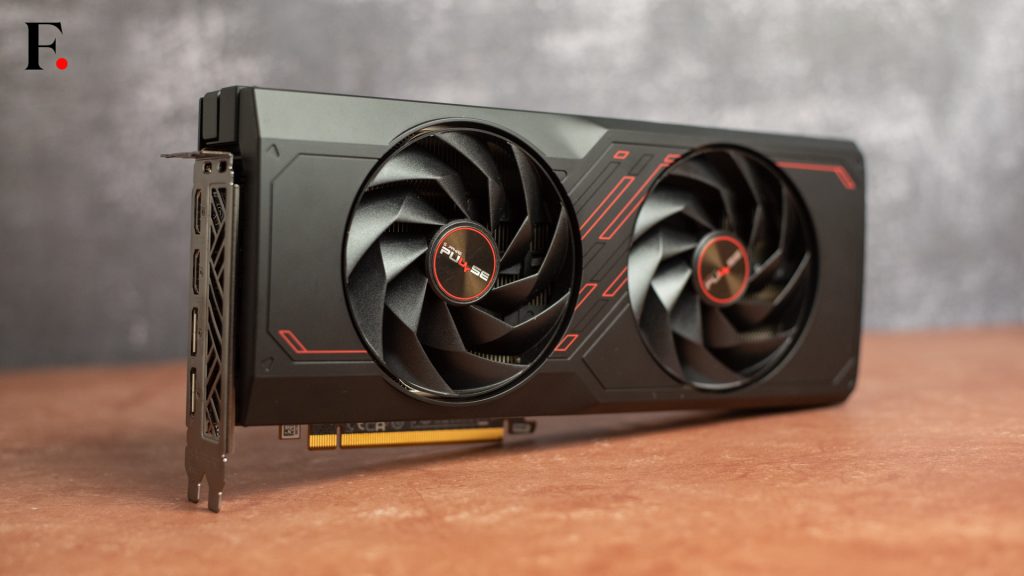
However, when you consider the pricing, things start getting a little tricky. For about Rs 45,000, you can get the reference design RX 7800 XT. However, board partners are selling it for about Rs 55,000. And because the 7700 XT does not have a reference design, you can only go for cards from board partners, who are selling it for Rs 45,000 on average.
Ultimately, the RX 7700 XT’s competitive edge comes down to its pricing. It offers a solid 12GB VRAM configuration, making it an attractive choice for gamers looking for a balance between performance and cost.
If you’re in the market for a GPU that strikes the right balance between price, performance, and thermal efficiency, the RX 7700 XT appears to be a pretty good choice.
What's Your Reaction?



























































